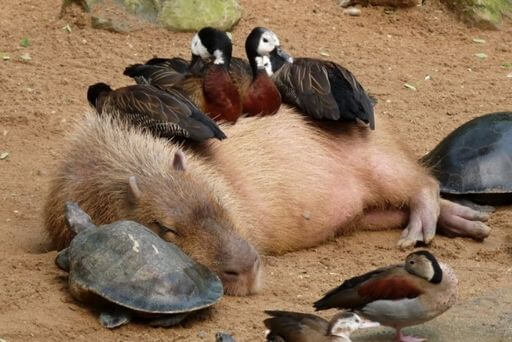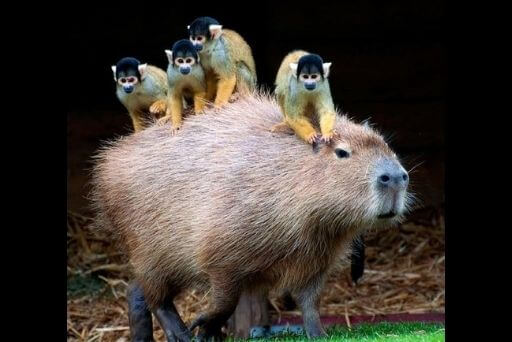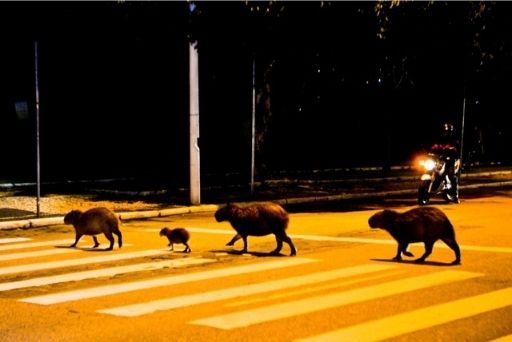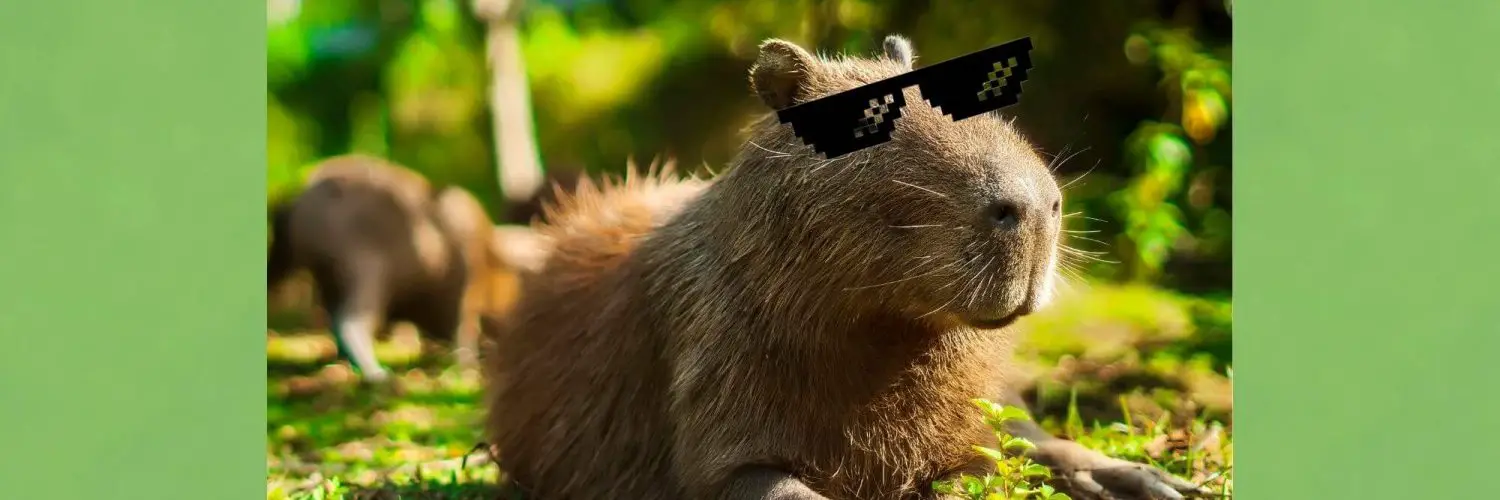Speaking of curious animals, Capybaras are the most bizarre animals you will ever come across. They may be queer-looking, but they are the world’s largest rodents and hands-down South American natives. Capybaras are social creatures that look like overgrown guinea pigs. They have nostrils atop their heads, ears, eyes, and partially webbed feet. All of these physical characteristics make them suitable for the wetland habitat they survive in. Over the years, having been hunted for leather and meat, this peculiar mammal population has declined. But, they are the undisputed pseudo stars of the internet. Did you know they have a reputation of following a poop and plant-based? Sounds gross? Well, you can love them, hate them, but this nature’s ottoman is something you cannot ignore. Let us find out some fascinating facts about the mammal. And, also figure out the reason as to why they are called the ottoman of nature.
- Quirky vocal repertoire
This cute mammal is a rather vocal animal. A capybara likes expressing and thus makes all kinds of noises. Mind you, each purr, cackle, whistle, whine, grunt, teeth-chattering, and barking has a harmonic difference. Each sound they make bears a crucial meaning, like some may mean environmental cues to warn the group members of impending danger.
- Teeth growth that never ceases
The capybaras have teeth that have to undergo constant wearing and tearing. You must be thinking why. Well, they use their narrow-edge, chisel-like incisors to eat cut grasses and aquatic plants. Hence, their pearly molars continue to grow to masticate the greens and grind the barks and grass.

- Social and gregarious animals
Capybaras live among their large herds and easily mix up with other wild animals. They are very gregarious and lively. It is for this reason that the birds sit on them while feeding on insects. It is a pleasure to watch how these cute mammals share a symbiotic relationship with cattle tyrants and other animals. Some wild creatures even end up traveling with these rodents and snag insects that they harrow.
- Passionate poop eaters
Capybaras eat their poop and are thus autocoprophagous. They participate every morning in this practice. They feed on the bacterial flora and derive the maximum nutrition out of that pool. Sounds super gross, isn’t it? The grasses they consume are tough to digest, but their bodies get another chance with the whole poop-eating system. Wondering what chance the body gets? Well, they are able better to absorb the fibrous meal of the previous day.

- Act like the animal kingdom’s furniture
The capybaras are often referred to as the “moving chairs” or “nature’s ottoman” because these over-friendly creatures knock back a request of ride-sharing requested by other animals. Everyone lays, perches, and sits on this much-obliging rodent. Rabbits, monkeys, you name it, and sometimes even other capybaras.
- Agile on land but sleep in the water
Capybaras are interesting creatures, don’t you think? After all, who falls asleep in water whilst keeping the nose at the bank’s edge or take beauty naps along marshes, mangroves, and rivers? Oh, come on, the scorching Amazonian sun deserves the full blame. We are yet to find someone as quaint as the capybaras that sleep in water but run like horses on the land. They can reach the speed of 35 kilometers per hour as they know their way too well, around the ground.
- Are plant eaters
Besides their poop, Capybaras love gorging on aquatic plants, fruits, barks of trees, fruits, and pretty much anything that’s not flesh. Their diet changes with seasons; however, they have a massive appetite. Would you believe that they consume as much as 6-8 pounds of food each day? When the dry spell continues, they gorge on squashes, melons, grains, and reeds. To avoid dangerous predators, they eat at dusk or at dawn.
The 2-feet cool darlings are everything you need on a bad day
The capybaras may be the king of Rodents, but this rodent is the largest one with a height of 2 feet. No tail and a barrel-shaped body make them cuddlesome. We love how this short-statured animal has many human traits. For instance, capybara mommies keep watchful eyes on their babies and nurse them. They love to defend their habitat and are incredibly communicative. We feel like keeping them and giving them all the sloppy kisses and cuddles. Do you feel the same? Let us know in the comments below.



























